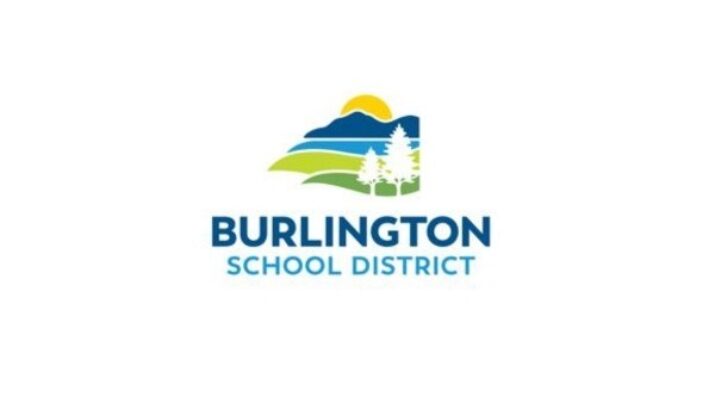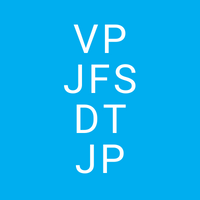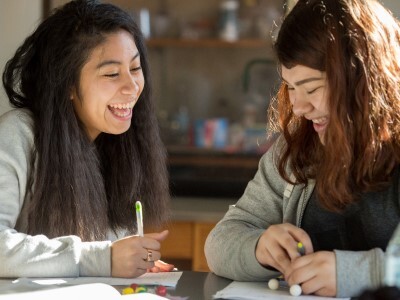What Happens When Students and Community Members Help Write Your Strategic Plan? The Story of Inclusive Design in Burlington School District
Topics

Next generation learning is all about everyone in the system—from students through teachers to policymakers—taking charge of their own learning, development, and work. That doesn’t happen by forcing change through mandates and compliance. It happens by creating the environment and the equity of opportunity for everyone in the system to do their best possible work.
Burlington School District practiced four new habits of working together with a community-based coalition to create and enact a strategic plan that reflects the needs of, and is broadly endorsed by, diverse stakeholders.
Strategic plans have a bad habit of collecting dust. Created by a small group of insiders and then presented to the community at a late-stage through “input” sessions that are more about endorsement than debate, it should not surprise us when only a few feel connected to the plan and responsible for its implementation.
But is there a different way to engage the community that goes beyond “listening tours,” surveys, and focus groups? One that would create a stronger plan, better-fit to real needs? One that changes the very ways in which school systems and communities work together??
At Burlington School District in Vermont, these questions drove us to explore a better way.
Under the leadership of Superintendent Tom Flanagan, we sought to rally broad commitment by convening a diverse and representative coalition of students, educators, and family and community members to help craft the district’s goals and strategies. In consultation with the Center for Innovation in Education, we built an approach to strategic planning with the coalition based on four new habits of working together: inclusion, empathy, co-creation, and reciprocity. By operating in a new way based on these habits, we hoped to engage a broader set of stakeholders, see problems from more angles, and become more creative and comprehensive in our problem-solving. We also wanted our process to center community ownership of the plan.
So what happened? Leaders from our district and the community-based coalition collaborated over eight months to co-create a 2022-2027 Strategic Plan that our school board unanimously approved, committing to the goal that “Burlington School District will be student-centered and responsive to the full range of identities, abilities, cultures and languages in our community.” In doing so, the school board endorsed a set of priority areas and concrete strategies to address the collectively-developed and collectively-owned statements of root causes currently standing in the way of this goal.
But equally as important as what we created is how we went about it. This is the story of how practicing new habits of working together enabled our district and the coalition to arrive at a strategic plan that, in the words of Superintendent Flanagan, “isn't the plan I would have created" but reflects the authentic needs and desires of—and is broadly endorsed by—diverse stakeholders in the community and district.
Inclusion
Practicing new habits of inclusion meant making intentional efforts to include diverse stakeholders in the coalition, especially those whose perspectives are often devalued or left out of decisions that affect their communities. Based on Open System Institute practices, members of the coalition were drawn through three separate efforts: the district appointed 13 members; an open application favoring diversity resulted in the selection of 12 additional members; and 10 members joined who were contacted through a “random pull” of families and students in the district, similar to jury selection. As a result, the coalition included students, parents, community members, educators, district administrators, and school board members and was nearly 10 percent more representative of the global majority than the district as a whole.
In addition to the initial process of invitation, the coalition sought to practice inclusion in an ongoing way by ensuring that all stakeholders felt valued and that they belong.
As one coalition member observed:
“I was really taken by this need across teachers, parents, and students—all of the players—for a sense of belonging and being connected. [And] how important and powerful it is to make sure that everybody feels included, feels heard, and feels like they belong to Burlington.”
Empathy
We practiced empathy by listening to the concerns of others, especially people whose perspective or lived experience is different from one’s own, and by trying to understand how they feel about issues that affect them. Understanding how people feel—not just how they think or what their opinions are—helped us unite people across lines of difference.
Each of the coalition members were asked to conduct at least two “empathy interviews” with members of the Burlington community who may not have their voices heard very often on educational issues. Members conducted over 75 interviews using open-ended interview questions such as, “Tell me about a time when your school or district learned something about you or your family that was helpful to you.” These interviews uncovered the beliefs, emotions, and needs of the Burlington community.
The impact could be profound. As one coalition member said:
“It was really eye opening to [hear others] sharing painful stories about how students were not being served and their frustrations. This was profound for me… I had a fuller picture from it all!”
Empathy interviews allowed district leadership and the coalition to connect with stakeholders in members’ extended networks in order to bring in insights that are typically unavailable to decision-makers. As one district leader shared:
“The empathy interviews were incredibly powerful. [My children] are white, cis-gendered, able-bodied studients, so I had a very limited perspective. But the empathy interviews, and hearing all the different stories… gave me pause, and really allowed me to expand my vision and my view.”
As one coalition member shared about practicing empathy:
“I realized barriers and obstacles were common across multiple groups—not just for students with disabilities or a new American family, but they were the same [for multiple groups]. By tackling them, we are moving across those boundaries.”
Ultimately, synopses of these empathy interviews were read by every member of the coalition, broadening connection and insights even more deeply.
Co-Creation
We embedded co-creation throughout the strategic plan process. Co-creation develops when diverse stakeholders collaboratively design, test, and refine solutions to a shared problem. In diverse groups, care must be taken to ensure that all perspectives are valued and that all participants can enter the conversation on an equal plane.
Components of the Strategic Plan were co-created through iterative rounds of collaborative discussion, writing, and revision among members of the coalition and district leadership.
As one coalition member noted, co-creating these elements with people representing diverse perspectives resulted in a stronger strategic plan:
“[We were] able to take experiences that we hadn’t had to move the work forward. It was important not to just hear voices like our own. That made a richer experience for everyone and for a better product, that we all were experiencing things through many different voices.”
Importantly, each of the stages of co-creation intentionally included students as equal participants. Students provided fresh perspective and creative thinking that moved the work forward. One coalition member described a moment of co-creating with a student coalition member. The student “said something that really hit the bullseye and we all saw the issue in a new way.” The experience led this coalition member to realize that “everything we do should be student centered and student led.”
Reciprocity
We practiced the habit of reciprocity between groups by creating space during meetings for them to listen to each other’s needs and respond in ways that address those needs. Reciprocity is a “give and take” between individuals or groups that requires them to acknowledge their mutual dependence and to identify and disrupt differences in power and privilege that currently exist between them. It is also an acknowledgement that ongoing responsiveness and two-way communication is necessary to build trust.
Notably, feelings of reciprocity had been missing from many coalition members’ previous encounters with the district. Said one member:
“Early on in the meetings some people were feeling discouraged because they felt like, ‘Oh we’ve been here, we’ve done this before and nothing ever changes.’ And there was a feeling of being disheartened and skeptical that the work would amount to anything.”
The coalition’s approach to co-creation was meant to facilitate greater reciprocity by consistently circling back any time the district was charged with moving the work forward. Often, districts undermine reciprocity by taking community input and doing the rest of the work without checking in with the community. We made sure to check back in with our coalition to gut-check that the district’s next steps matched up with our shared expectations—and coalition members often joined district work teams, bringing their capacity and insights to the work.
As a result, one coalition member shared how modeling responsiveness through the coalition increased her trust in the system. Experiencing reciprocity led her to “feel hope” that when multilingual families and students raise concerns about the system, “they will be listened to by the teachers and administrators and will be taken into consideration.”
So What??
As we mentioned, Superintendent Flanagan has noted that this is not the plan he would have written alone. Had it been written alone, we are convinced we would have missed some key elements that our community brought forward. For example, the plan acknowledges the lack of follow-through and transparency of previous plans. This plan acknowledges, in plain language, the lack of trust that has damaged the relationship between the community and the district. Priority areas that made it into the plan were intentionally chosen to address and repair previous harm.
For example, the very first priority area in the plan centers the community’s desire that “Students, families, and staff will experience a sense of belonging and students and staff will feel their well-being is supported in our district.” In addition to indicators based on more traditional metrics like chronic absenteeism and family and student surveys, the plan details what all stakeholders should experience when the district successfully cultivates well-being and belonging. Commitments like “All students and families find themselves represented in District materials, communications, and initiatives” give community members something tangible to look for when discussing the district’s progress.
Because of their deep and authentic engagement throughout the process, one student felt comfortable enough to present this strategic priority area to the board. She brought the words to life by connecting it to her own experience as a new Burlingtonian:
“My family immigrated from Nepal to the U.S. when I was in second grade. Going to a new school, speaking a different language, and taking in a new environment is a lot for a child. Many children in the Burlington district have experienced, or are experiencing, these overwhelming emotions. Wanting to be included in the community is a longing not only of immigrant students, but every individual.”
Community involvement also led us to center the student experience in every priority area and to focus more on the needs of students on IEPs. Having community members and students on the team also changed the language we chose to use rewording the priority of “Recruiting and Retaining Educators of the Global Majority” as “Educators who look like our students” to make it more concrete and transparent to our community. However, these key elements will never have their intended impact unless we continue to keep our eye focused on the four key habits.
Making It Stick
None of the four key habits, when exercised just once or twice or even for a few months, can spare the strategic plan from gathering dust on a shelf. Instead, inclusion, empathy, co-creation, and reciprocity must become habitual to drive lasting change.
To help their newfound habits stick, the coalition recommended an ongoing role for a diverse stakeholder group like theirs to oversee implementation of the strategic plan. We responded by establishing a Strategic Plan Guiding Coalition Steering Committee charged with ensuring effective implementation. As with the original coalition, we took intentional efforts to include diverse stakeholders. In order to eliminate barriers for some members to participate and to elevate its status, members of the coalition are compensated for their time.
At our meetings, committee members learn about and share updates on progress in the priority areas, learn from each other about ways to support the work, gather evidence and feedback about impact, and make plans for further progress.
Within the organization, leaders are practicing the habits as well. They are critically questioning when co-construction should be used, finding new ways to bring families into decision-making, and listening with empathy. For example, when restructuring our Educational Support Team (EST) process, members have decided to start with empathy interviews before referring students for additional support.
These are but two examples of how orienting around the habits have contributed to structural and sustainable changes in the way that the Burlington School District engages with its community. As one board member said at the meeting where the plan was ratified:
“This is more than just a strategic plan, it’s more like a constitution for our district.”
Student, family, and community members of the coalition see it that way too. In a closing reflection session, they implored those tasked with implementation to keep the plan “alive” by continually engaging new stakeholders with it and “revising it as things change and progress is made.” As one member summed up:
“Don’t let all this work go to waste.”





